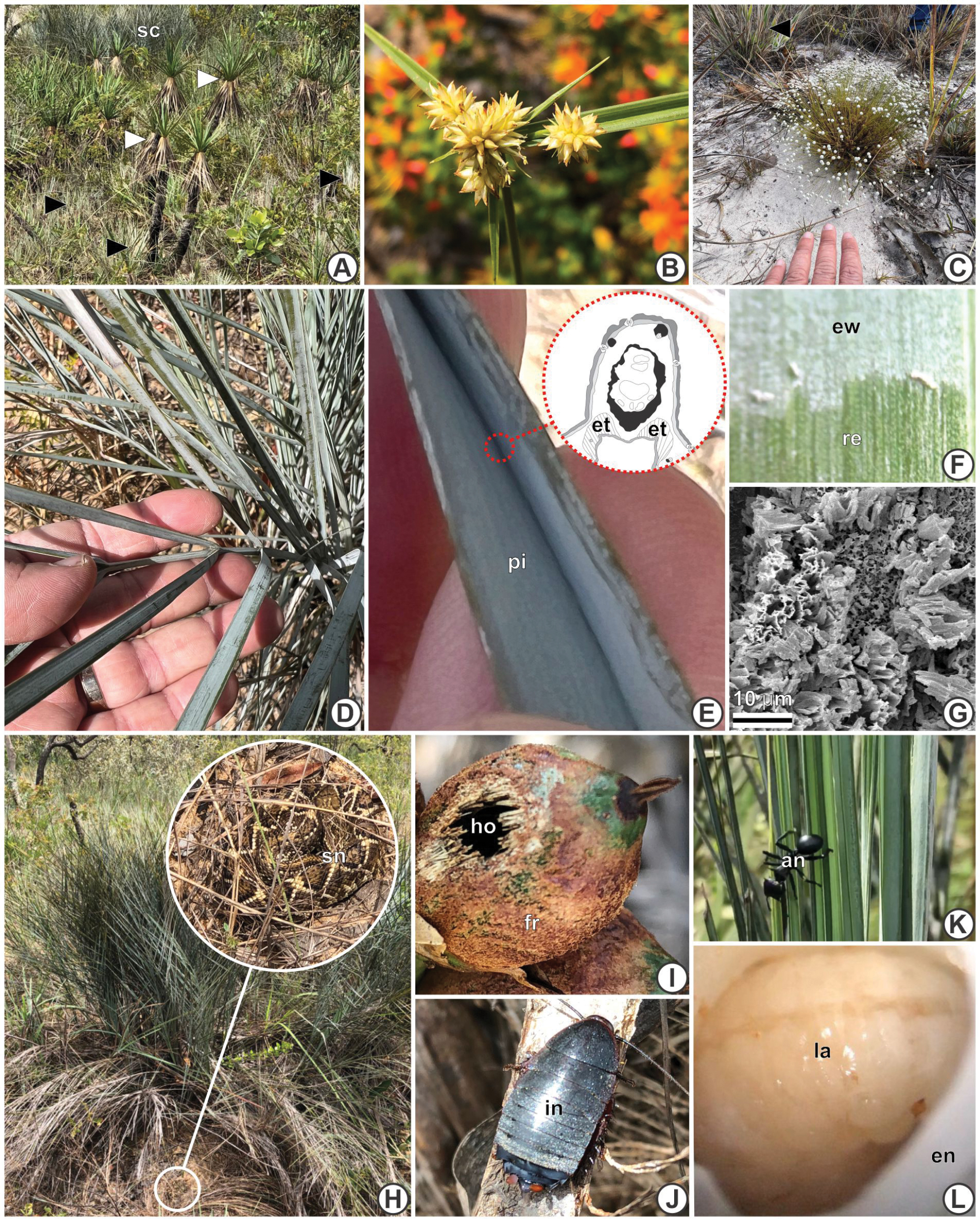
|
||
|
Habitat and morphoanatomical aspects of Syagrus carvalhoi with ecological implications. A. Specimens of Poaceae (3 black arrowheads) and Velloziaceae (2 white arrowheads) near S. carvalhoi (sc). B. Cyperus sp. C. Paepalanthus sp. D. Pinnae frequently folded during the dry season. E. pinna (pi) manually unfolded exposing the adaxial surface; the red dotted circle shows a diagram of the expansion tissue (et) on a midrib cross-section. F. pinna densely covered by epicuticular wax (ew) compared to an area where the wax was manually removed (re). G. Epicuticular wax, SEM. H. The white circle shows a snake (sn) revealed after removing old leaves. I. Hole (ho) caused by predation of fruits (fr) by rodents. J. Insect (in) on an old pseudopetiole. K. Ant (an) walking on a pinna. L. Larva of a beetle (la) feeding on the endocarp (en). Photographs by Bruno F. Sant’Anna-Santos. |